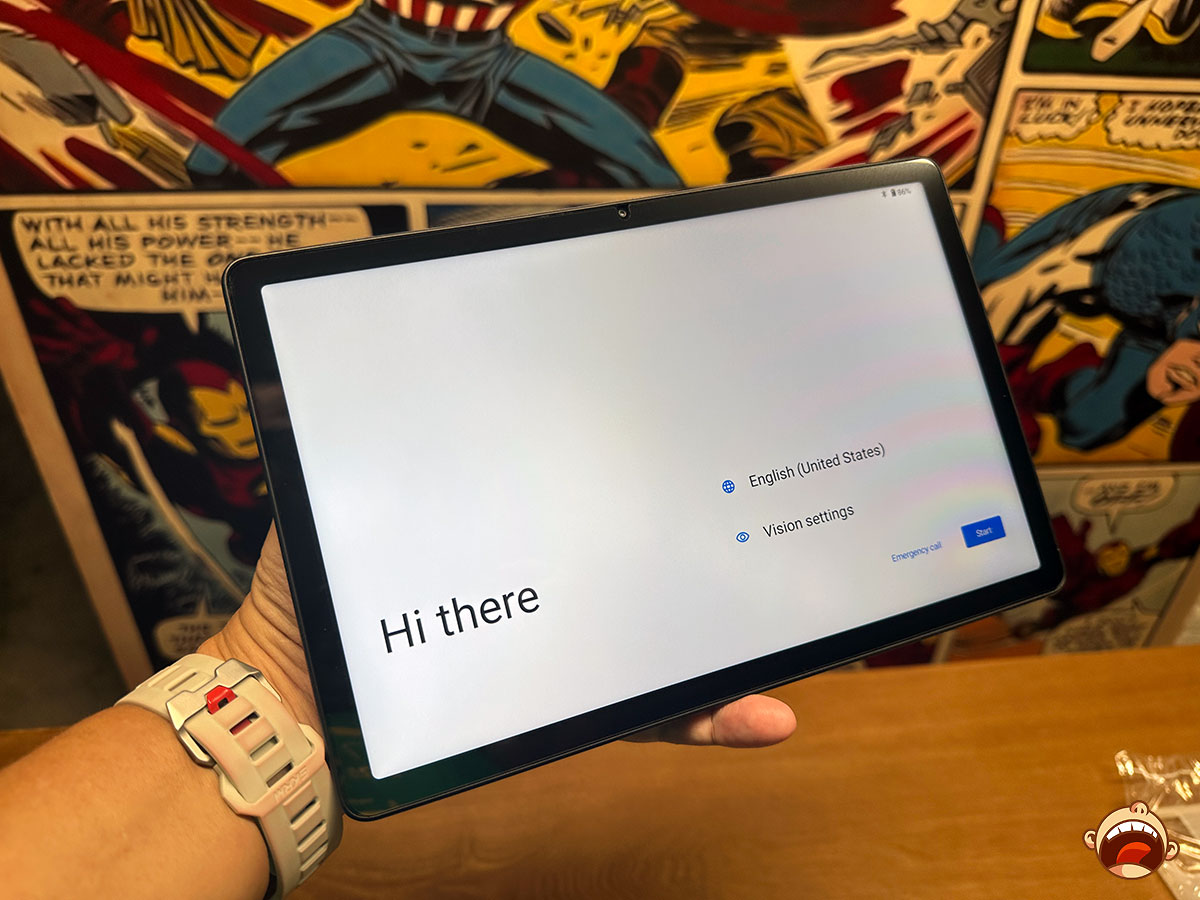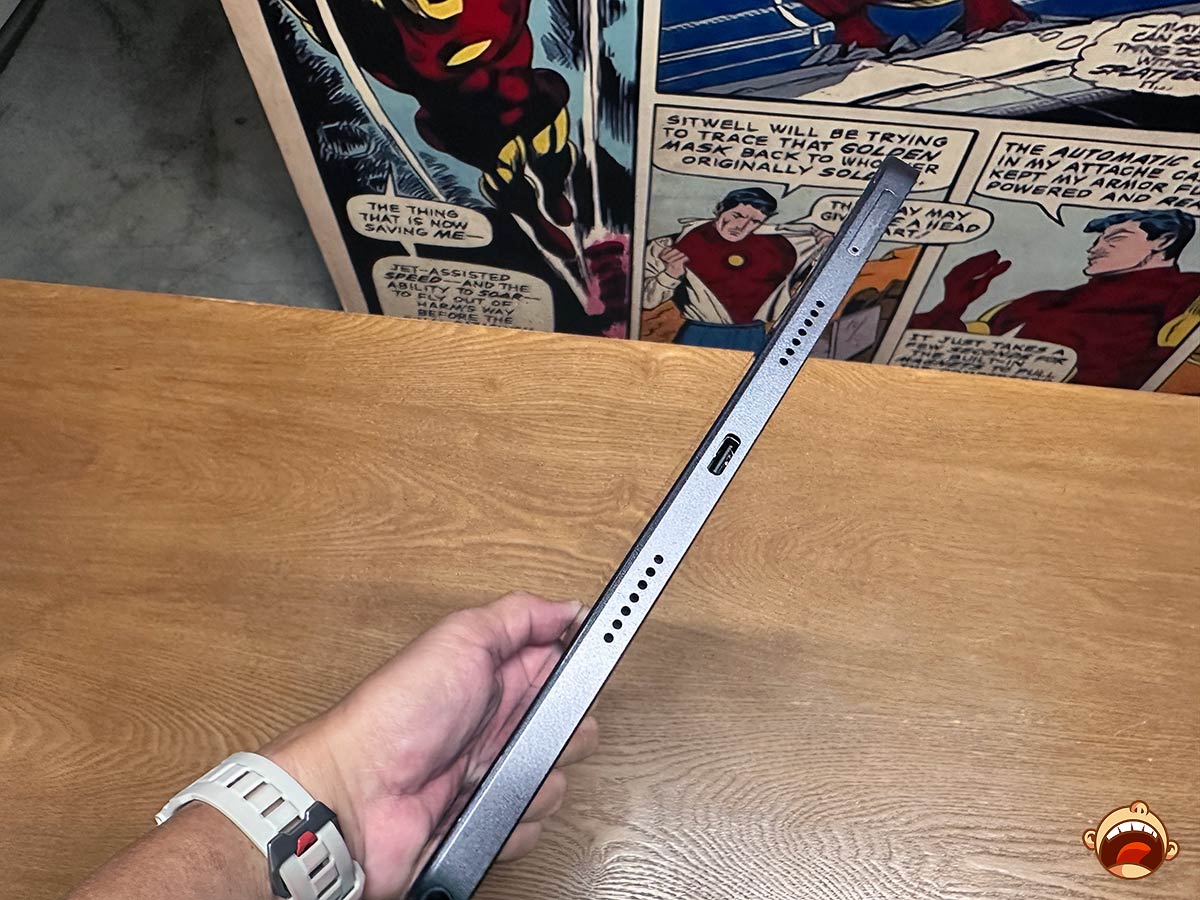What do you use a tablet for? Now, don’t pretend it’s for work. You’re better off with a 2-in-1, a convertible, or something with actual productivity chops. Let’s be real—we use tablets mostly to watch videos. Maybe some of us draw on them. That’s it.
So, if video consumption is your main thing—with a little web browsing and social media on the side—you’ll want to check out the Chuwi AuPad. Listed on Chuwi’s site as the “AuPad | Snapdragon 685 | 10.95”, it’s an entry-level Android tablet priced at just S$183.06. Why the strange price? It’s currently discounted from S$267.86. Still weird pricing, but hey—it’s super affordable.

It’s aimed at casual users who stream, browse, and maybe do a bit of light productivity on the go. Oh, and yes, we’re reviewing it today. But before we get into the nitty-gritty, here’s a quick rundown of the specs:
- OS: Android 14.0
- Display: 10.95-inch, 1920×1200, 10:16
- SoC: Qualcomm Snapdragon 685
- Graphics: Adreno 610 GPU
- Storage: 128 GB UFS 2.2
- Memory: 8 GB LPDDR4
- Battery: 3.8V / 7,000 mAh
- Charging: 5V / 2A
- Speakers: High-fidelity quad-speaker
- Dimensions: 257.30 x 168.90 x 8.0 mm
- Weight: Around 493g
- I/Os: 1x USB-C, 1x TF card slot
- Connectivity: Dual-band WiFi (802.11a/b/g/n/ac), Bluetooth 5.0
Design and Build
The first impression is that it’s sleek—and surprisingly lightweight. I had zero expectations on heft, but lifting it out of the box, I was genuinely surprised. I’m not sure what the back is made of—probably plastic—but it’s cold to the touch and feels almost like aluminum. Whatever it is, it looks and feels premium.
The design is clean, broken up only by a neat rectangular camera bump and a darker grey antenna section. The camera bump itself has a subtle gold chamfer and panel lines. Classy. And yes, it has two rear cameras.
Buttons are positioned just beside the camera bump, and they feel solid. No rattly or sticky buttons here. You’ll find the speakers, USB-C port, and TF/SIM tray at the bottom. That’s right—it supports SIM cards for mobile plans and memory cards for storage expansion. I didn’t have either to test, though.
Stylus support is there, but only for basic, non-powered styluses. I tried Studio Neat’s Cosmonaut stylus, and it worked fine. No pressure sensitivity, though. And no, Apple Pencil compatibility isn’t a thing—anyways, one of those costs as much as this tablet.
Despite being entry-level, this tablet isn’t short on features. It supports external keyboards and mice, so yes, Google Docs, Word, Excel, and all that productivity jazz are covered. I paired it with a Keychron K3A1 and Razer Orochi V2—boom, instant pseudo-laptop.
But this thing is not for bezel haters. It is chunky, though not too obnoxious. The bezel on this device is very much like the iPad mini 6. Given that it is much larger, it is acceptable. It is definitely not a dealbreaker, but if you’re obsessed with thin bezels, look elsewhere.
Now for the trade-offs: no fingerprint reader, no face unlock, no knock-to-wake, no lift-to-wake. After being spoiled by modern conveniences, typing in a PIN feels… like a huge hassle. Those features would require sensors, and this budget-friendly slab skips them.




Display
You get a 10.95-inch 1920×1200 display with a 10:16 aspect ratio. It’s good for movies, though not mind-blowing. The contrast isn’t great—blacks are a little washed out, and dark scenes are just… dark. That said, I still prefer this screen over my iPad mini 6. I enjoyed the contrast more on the Hi10 Max, though.
I have no idea what the panel type is. It’s probably LCD. Colors are decent. Brightness is fine indoors and surprisingly usable in bright light, given how the display isn’t the brightest and the weak contrast. YouTube videos look a bit jagged at 1080p60. Strangely, though, there are no 4K playback options, even for 4K trailers. Netflix and Prime Video look better, though still a bit soft. Though I have no idea of the resolution or bitrate of the video streamed
Contrast is the big letdown here. Combine that with modest hardware, and you won’t get a buttery smooth experience switching apps or scrolling. But it’s still fine. Nothing that will ruin the experience. Ghosting can be noticeable during fast motion in darker scenes, so action fans, take note.
These are just my observations. If you are really watching a movie and following the storyline, you probably will not see what I have observed. I have intentionally looked for things because I am reviewing this product.
Performance
I ran multiple apps—browsing, YouTube, Docs, Word—you name it. It’s not the smoothest ride, but it doesn’t crash and burn either. It never once gets warmed up, let alone hot. There’s a bit of stutter when switching between apps, but nothing unusable.
In gaming, I have only tested it with Mario Kart, and the experience was on par with my iPad mini. Not ultra-smooth, but playable. If you’re expecting flagship performance, this isn’t it. If you are going to be picky, so no, this is not smooth like a 1,000-dollar tablet, obviously.
Software
It’s pure stock Android. No bloatware. No nonsense. Though partway through using it, I started running a third-party launcher: Niagara Pro Launcher, and it works smoothly when scrolling through the apps. Not going to lie. I was half-expecting a less smooth experience. The device supports both traditional onscreen buttons for navigation as well as gestures. The latter is my preference, and I do find some jerkiness when using gestures. As before, it is no deal breaker. It’d be a deal breaker if this thing costs 500 or more. If you know what I mean.





Battery Life
Battery life is great. Over three weeks of use, I only charged it twice. Granted, I didn’t “abuse” it—mostly streaming Netflix, Prime Video, YouTube, and some web browsing.
Charging isn’t fast—it’s a 5V/2A device with a 10W brick. But tablet charging isn’t as mission-critical as with phones. You’re probably not trying to top off in a hurry before heading out. It takes a few hours to fully charge, so overnight charging is your best bet. No fast charging here, but that’s expected at this price.
Audio and Cameras
Audio quality is pretty impressive. I mean, it’s hard not to be when you have four speakers blasting away. The quad-speaker—two on top and two at the bottom—elevates the movie experience on this device. And they are LOUD. The only thing is that you may cover two of them if you’re holding it in landscape when watching on the go. This could muffle the sound a little. It’s just an observation.
On the cameras… let’s just say that cameras are never any tablet’s strongest suit. The AuPad is no exception. OK. It’s more than just not its strongest suit. It is not great. It has one front-facing camera on the landscape side, and two cameras around the back. How should I put it? They feel like they are from the pre-smartphone era. It doesn’t help that it has a huge 10-inch display to show off all the noise.
But let’s get real. You did not get this tablet for imaging. The main camera even has a Pro mode, but it will not save much in quality. Also, it has 8x zoom—but if I can be honest, I’d rather not have it. It’s digital zoom, and it’s far from decent. Again, you probably did not get this device for its camera prowess—or the lack thereof.

Connectivity
I’m not sure which USB spec the port uses, but Bluetooth 5 and dual-band WiFi (802.11a/b/g/n/ac) are on board. Both work as expected—no signal drops, no connection issues so far. The AuPad also supports SIM cards, which means mobile data and even voice calls are possible. That’s a huge win at this price point. Seriously—SIM support on a sub-S$200 tablet? That’s gold.
Verdict
If you want a tablet for YouTube, Netflix, and browsing without spending a fortune, the AuPad is a solid option. It works well for casual gaming and light productivity too. For an entry-level tablet, it does more than expected and holds up well under real-world use.
Of course, it’s not for everyone. If you’re doing 3D rendering, heavy creative work, or expecting buttery-smooth multitasking, this isn’t your machine. And if stutters and slower app switching drive you mad, look elsewhere.
Personally, I’m enjoying it. I use it to watch movies and TV shows almost daily. It’s also a solid entry-level option for kids, thanks to native Android parental controls—and the included silicone case helps protect it from drops and rough use.
If you’re sold, you can pick up the Chuwi AuPad Android Tablet from Chuwi’s SG website for the aforementioned S$183.06 (about US$136). Oh—and it doesn’t seem to be available in the US. Bummer.

Images: Mike for Mikeshouts.com.



